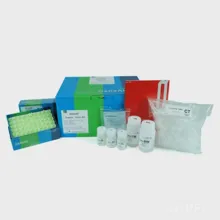معرفی
کیت آماده سازی ژل SDS_PAGE
SDS-PAGE gel preparation kit
برای آمادی سازی حدود 40 عدد ژل SDS-PAGE و حاوی 6 لیتر (پودر) بافر آماده تانک
بهترین و به صرفه ترین انتخاب برای تکنیک SDS-PAGE
شماره کاتالوگ: DSK100
سازنده: DNAbiotech Co, I.R Iran
شرایط نگهداری : 4o C
برای دریافت اطلاعات کامل و دریافت دفترچه کیت اینجا کلیک کنید.
www.kalazist.ir
Cat No.: DSK100
Brand: DNAbiotech
Molecular Biology grade
To see the data sheet CLICK HERE.
Kit Components:
No. | QTY | Item | Storage |
1 | 100 mL | Acrylamide/Bisacrylamide-stock solution (30: 0~8 %) | 4o C |
2 | 80 mL | Separation gel buffer | 4o C |
3 | 35 mL | stacking gel buffer | 4o C |
4 | 2 × 5 mL | 5 X sample buffer | - 20o C, 4o C (aliquted) |
5 | 1 mL | TEMED (100 %) | 4o C or RT |
6 | 5 gr (with 10 tube) | Ammoniumpersulphate | 4o C or RT |
7 | 6 Packs (for 6 L) | 1X Running buffer for 1 L | 4o C or RT |
Related Products:
Bradford Protein Assay Kit (cat#: DB0017)
Acrilamid/Bisacrylamid stock solution (cat#: DB9602)
APS for SDS-PAGE (cat#: DB9607)
TEMED for SDS-PAGE Analysis (cat#: DB969606)
Stacking gel buffer (cat#: DB9604)
Separation gel buffer (cat#: DB9603)
SDS-PAGE rining buffer for 1 L (cat#: DB0016)
SDS-PAGE sample loading buffer (cat#: DB9605)
Coomassie Brilliant Blue R-250 Staining Solution (cat#: DB9608)
Coomassie Brilliant Blue G-250 Staining Solution (cat#: DB9609)
Coomassie Brilliant Blue destining Solution (cat#: DB9610)
بررسی تخصصی
SDS-PAGE
The separation of macromolecules in an electric field is called electrophoresis. A very common method for separating proteins by electrophoresis uses a discontinuous polyacrylamide gel as a support medium and sodium dodecyl sulfate (SDS) to denature the proteins. The method is called sodium dodecyl sulfate polyacrylamide gel electrophoresis (SDS-PAGE). SDS (also called lauryl sulfate) is an anionic detergent, meaning that when dissolved its molecules have a net negative charge within a wide pH range. A polypeptide chain binds amounts of SDS in proportion to its relative molecular mass. The negative charges on SDS destroy most of the complex structure of proteins, and are strongly attracted toward an anode (positively-charged electrode) in an electric field. Polyacrylamide gels restrain larger molecules from migrating as fast as smaller molecules. Because the charge-to-mass ratio is nearly the same among SDS-denatured polypeptides, the final separation of proteins is dependent almost entirely on the differences in relative molecular mass of polypeptides. In a gel of uniform density the relative migration distance of a protein (Rf, the f as a subscript) is negatively proportional to the log of its mass. If proteins of known mass are run simultaneously with the unknowns, the relationship between Rf and mass can be plotted, and the masses of unknown proteins estimated.
Protein separation by SDS-PAGE can be used to estimate relative molecular mass, to determine the relative abundance of major proteins in a sample, and to determine the distribution of proteins among fractions. The purity of protein samples can be assessed and the progress of a fractionation or purification procedure can be followed. Different staining methods can be used to detect rare proteins and to learn something about their biochemical properties. Specialized techniques such as Western blotting, two-dimensional electrophoresis, and peptide mapping can be used to detect extremely scarce gene products, to find similarities among them, and to detect and separate isoenzymes of proteins.



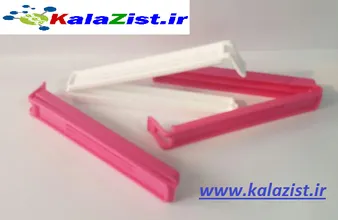


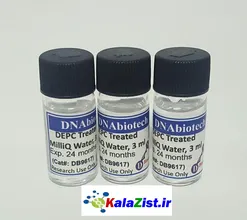
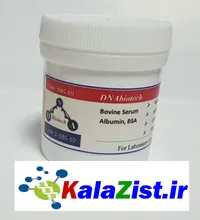

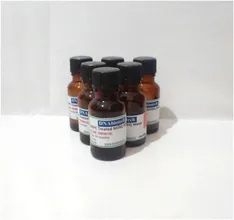

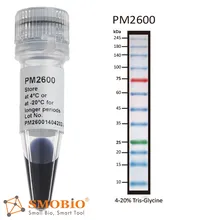
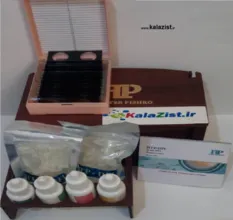






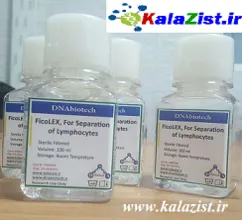
 trizol DNAbiotech kalazist.webp)

 کالا زیست kalazist dnabiotech trizolelex.webp)
